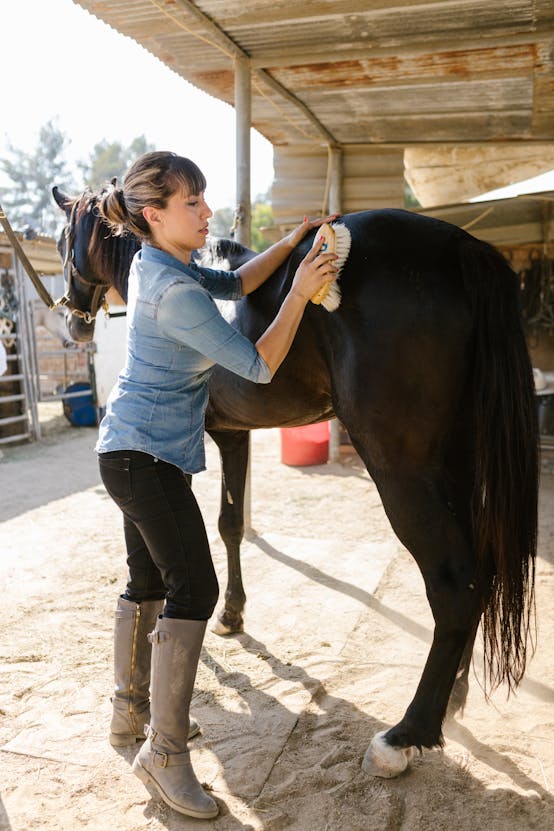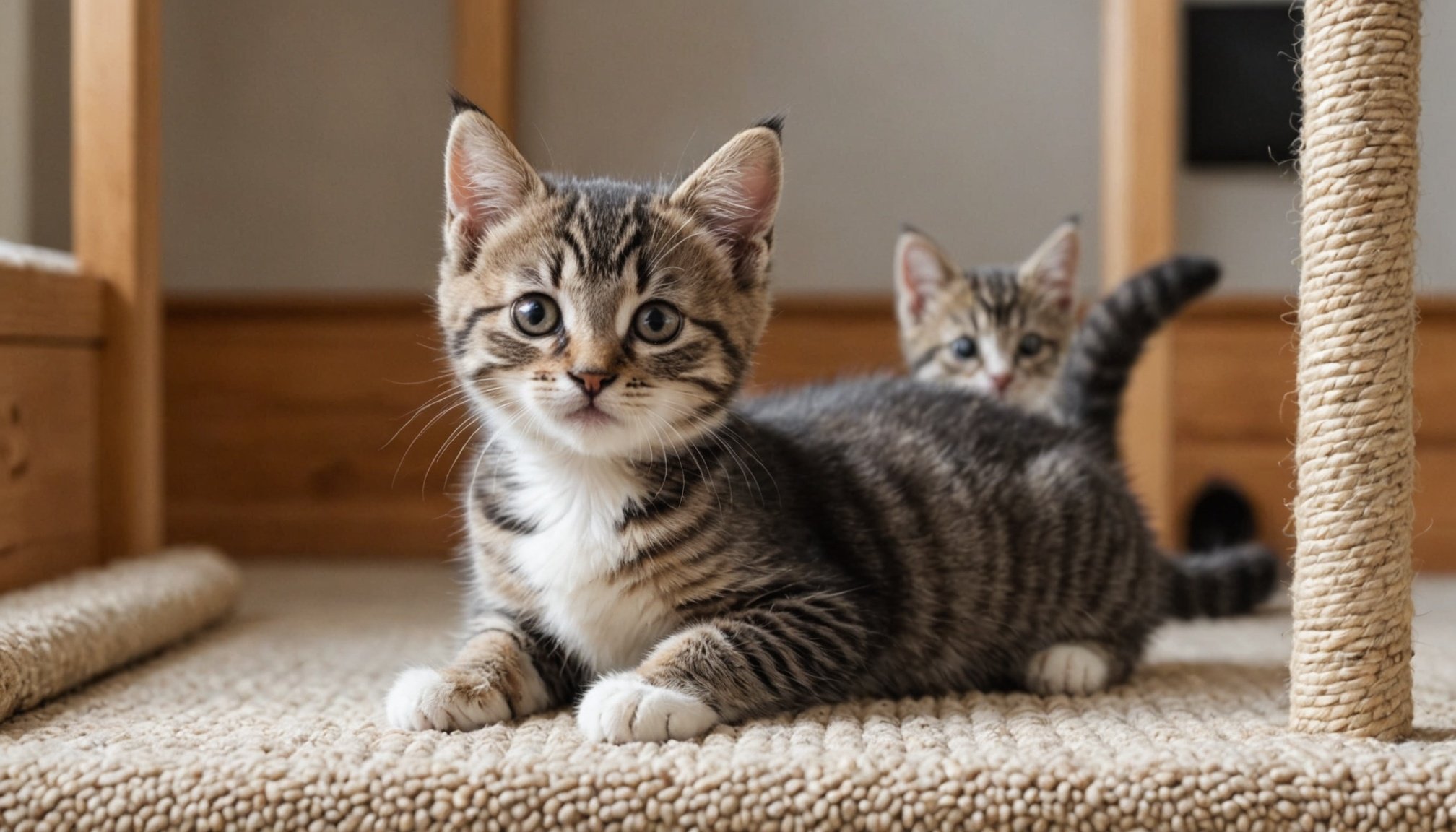Understanding the Importance of a Secure and Stimulating Environment
Creating a secure and stimulating environment is paramount for a kitten’s overall development. Not only does it provide a safe haven, but it also ensures their emotional and physical growth. Kittens are inherently curious creatures, which makes them prone to exploring their surroundings. Therefore, a well-thought-out play space design is crucial. This space should be free from hazards while offering ample opportunities for adventure.
A secure environment significantly contributes to kitten safety. By “kitten-proofing” areas where they roam, you reduce risks of injury and help cultivate a worry-free atmosphere. Securing electrical cords, using childproof latches, and ensuring no small objects are within reach are a few ways to achieve this.
En parallèle : Essential Steps to Design a Cozy and Secure Outdoor Cat Enclosure
Beyond safety, environmental enrichment plays a vital role in a kitten’s life. It includes providing toys, climbing posts, and various textures and surfaces. These elements stimulate their senses and encourage natural behaviours such as hunting and climbing. Incorporating such features in the play space design fosters not only their physical development but also enhances cognitive skills and emotional resilience. By investing in an enriching environment, you lay the groundwork for a happy, healthy, and active pet.
Assessing Space and Materials
When designing a peaceful sanctuary, a thorough space assessment and thoughtful materials selection are fundamental. Understanding your space’s dimensions and selecting safe materials will foster an inviting environment.
A lire également : Essential Temperature Control Tips for Keeping Hairless Cat Breeds like the Peterbald Comfortable
Evaluating Available Space
Begin by carefully measuring the dimensions of the area. It’s essential to know the size and shape of the space to determine what can be accommodated safely. Besides dimensions, identify any potential hazards such as sharp corners or exposed electrical sockets. Removing these can prevent accidents and create a safer habitat.
Choosing Safe Materials
Selecting the right materials is crucial for creating a pet-safe environment. Opt for cat-friendly surfaces like non-slip rugs and scratch-resistant furniture. Also, avoid using toxic materials that could harm your pet. Small parts that might come loose should be eliminated, as they pose choking hazards.
Incorporating Safety Features
To enhance safety, consider installing barriers or gates in open or potentially dangerous areas. This addition helps manage spaces and ensures pet safety. Additionally, check the stability of structures and items within the space. Secure furniture that might tip over easily, ensuring a stable and secured environment. This approach fosters both security and comfort for your beloved pets.
Design Elements for Play and Exploration
Creating an environment brimming with play structures and exploratory space is crucial for the playful nature of kittens. These elements promote both physical and mental stimulation.
Creating Vertical Spaces
Enabled by a network of climbing structures, kittens find vertical exploration essential for their health. Cat trees are popular and effective vertical elements. Climbing structures foster agility and the natural desire to survey their domain from elevated positions. Consider installing shelves or multi-level condos for a tailored vertical experience.
Interactive Toys and Activities
Engagement is sustained through interactive toys that challenge physical and cognitive abilities. Toys such as feather wands, laser pointers, and puzzle feeders offer dynamic interactions. Implementing a rotation system can keep interests piqued, ensuring toys seem fresh and intriguing. By swapping toys regularly, kittens remain curious and mentally stimulated.
Incorporating Hiding Spots
A cozy hideaway serves not just as a safety net but enriches the exploratory space. Hidden spots allow kittens to relax and balance play. Materials like felt, soft fabric, or cardboard boxes provide secure environments. These spots, tucked in corners or under furniture, create a comforting and adventurous space for your feline friend.
Incorporating Sensory Elements
Creating a stimulating environment for kittens is crucial for their development and well-being. By integrating sensory stimulation, we can enrich their experiences and encourage natural behaviours. Let’s explore three key areas: visual, scent exploration, and auditory enrichment.
Enhancing Visual Stimulation
Kittens are naturally curious, and using toys that have bright colors or movement can attract their interest and provide visual stimulation. Placing these toys at different heights or positions can also help in creating varied sight lines, allowing the kittens to see from different perspectives. This not only stimulates their vision but also encourages physical activity and exploration.
Adding Scentual Exploration
Scent exploration is another critical aspect of sensory enrichment. Safe, natural scents, such as catnip or valerian root, can be incorporated into playtime through scented toys. These scents engage kittens’ natural hunting instincts and can provide hours of entertainment. Ensuring the scents used are safe and appropriately introduced is key to maintaining their health and safety.
Auditory Elements for Enrichment
Auditory enrichment can involve toys that produce interesting sounds, capturing the attention of kittens. Whether it’s a gentle bell or crinkly fabric, these sounds pique curiosity and mimic natural wildlife noises. Additionally, ambient noise, such as a soft radio playing or sounds of nature, can provide comfort and reduce stress, fostering a sense of security in their environment.
Maintenance and Monitoring of the Play Space
Ensuring a well-maintained play space for kittens is essential for their safety and enrichment. Routine maintenance and monitoring play a critical role in this.
Routine Maintenance
A consistent cleaning schedule is vital to maintain a hygienic play area. Regular cleaning prevents the buildup of dirt and bacteria, keeping the environment healthy. In addition, frequent safety checks for wear and tear on toys help prevent accidents. Look closely at toys and structures for any breakage or small parts coming loose. This proactive approach ensures all play items are safe and fit for use.
Monitoring Kitten Behavior
Observing kitten behavior is crucial for identifying any signs of stress or discomfort in the play environment. Look for indicators like hiding, aggression, or reluctance to interact with objects. Encouraging kittens to explore their surroundings is key to their development. Identifying their fears and addressing them gradually can foster a more confident and curious kitten.
Adjusting Space as Kittens Grow
As kittens grow, their play space needs to evolve to suit their developmental stages. Consider transitioning to more complex play structures and toys to cater to their growing physical and mental capabilities. Adjusting the space not only keeps it engaging but also supports their ongoing growth and learning.













